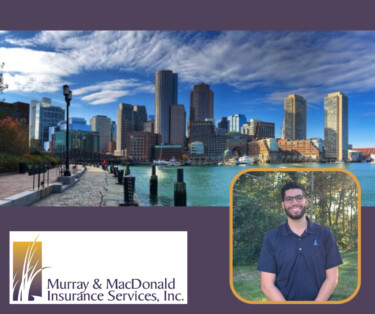
Property Insurance: What to Expect in 2023
March 16, 2023
Blog Post by Commercial Lines Manager - Gabriel DeSouza
If you manage or own insured property understanding TODAY’s property insurance industry will help you navigate the renewals you will be seeing for the next couple of years. We have entered a “hard market,” this is industry jargon for: carriers are 1) requiring rate increases, 2) revising coverages, and 3) changing their market appetite.
What does this mean for you?
1. Rate increases
The rate per $100 of insured property value is going up, simply put: at minimum the same building is costing more to insure today then previous years. Why? A few reasons are: the cost of building materials has increased, cost of labor has increased, and location can also drive costs up (coastal vs non-coastal). However the principal driver, is the cost of reinsurance. Reinsurance is insurance for carriers for catastrophic events. For example, Hurricane Ian is estimated to be around a $70 BILLION event (these claims are not solely being paid by the carrier whose name is on the policy). Carriers buy insurance for the same reasons we do, to help pay for a claim that goes above and beyond what we are comfortable with retaining. The issue is there are only a hand full of global players in this space. So when these national, or global, events happen they affect the reinsurers who negotiate rates with the carriers and ultimately pass those costs (or a portion) down to the end consumer.
2. Coverage revisions
Values, fair market value, skyrocketed. Along with FMV, your replacement cost value (RCV) increased (but these numbers are not necessarily the same). It can get confusing but RCV can be more than the FMV, and insurance carriers are focused on RCV because if your building burns to the ground they aren’t replacing what it’s worth but they are replacing the actual structure. Or in other words, it’s not merely what someone else is willing to pay for the building but the cost of materials and cost of builder constructing said building. And both of these categories have ballooned compared to pre-pandemic times. From the pandemic (2020 on), the insurance industry could not keep pace with these changes as they happen in a matter of months.
3. Market appetite changes
A general rule in risk mitigation is: do not risk a lot for a little. What insurers were willing to insure previously is not necessarily what the will continue to insure. Carriers may leave regions (market sectors) because of their risk exposure, for example properties on the coast see a lot of this ebb and flow due to appetite changes. Simply put, the risk may not justify the premium. Therefore, upgrades may be required to the building or protection systems (fire, burglar, water sensors, etc.) just to entertain the risk. Some may adopt a minimum deductible requirement (coastal properties see this often with increased wind deductible provisions in their policies). Ultimately, carriers are held to requirements by reinsurers which dictate underwriting guidelines.
Therefore the question becomes: what can we do?
Insurers are known to provide their very best pricing for their very best customers (or prospects). What proactive measures have we taken to set our properties apart for the others? What have we done to avoid claims entirely or mitigate the damage as quickly as possible. Do we have contracts in place for regular roof inspections (or our other utilities)? If you’re in a colder region do you have contracts for snow removal/roof ice dams? Have you utilized building water sensors to get immediate notification if a pipe has burst? Is staff properly trained (documented training) on what to do in the case of an emergency? Are all our alarms functioning and up to date? These may seem small but carriers are looking at these measures to determine who will get their best pricing. An options, albeit a last option in my opinion, is to self-insure your entire building (that will cost zero insurance dollars). However this may not be the most practical risk mitigation strategy (but it is still an option).
My hope is that this helps you think of how you can proactively respond to the hard market as you seek to continue having your property competitively insured.
If you want to chat more specifically about your situation I would love to help.
Gabriel DeSouza
508-289-4154